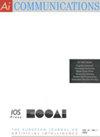对滤波器纹理分布敏感的动态细粒度结构化修剪
IF 1.4
4区 计算机科学
Q4 COMPUTER SCIENCE, ARTIFICIAL INTELLIGENCE
引用次数: 0
摘要
神经网络的剪枝无疑是当前处理大规模、高成本网络模型压缩的一种流行方法。然而,现有的大多数方法都需要高水平的人为调节修剪标准,这需要大量的人力来计算出合理的修剪强度。其中一个主要原因是网络中存在不同程度的灵敏度分布。我们的主要目标是发现适应这种分布的压缩方法,以避免由于不必要的修剪而对网络造成深刻的体系结构破坏。在本文中,我们提出了一种影响网络训练的过滤器纹理分布。我们还分析了该分布的每个不同状态的敏感性。为此,我们首先使用一种多维惩罚方法,该方法可以分析基于该纹理分布的潜在灵敏度,以获得修剪友好的稀疏环境。然后,我们建立了一个轻量级的动态阈值容器来对稀疏网络进行修剪。通过以较低的成本为每个过滤器提供合适的阈值,在不影响某些修剪敏感层对整个网络的贡献的情况下,实现了参数数量的大量减少。在最后的实验中,我们将这两种适合纹理分布的方法应用于ResNet Deep Neural Network (DNN)和VGG-16,并将它们部署在经典的CIFAR-10/100和ImageNet数据集上,得到了很好的结果,以便与优秀的前沿修剪方法进行比较。代码可从https://github.com/wangyuzhe27/CDP-and-DTC获得。本文章由计算机程序翻译,如有差异,请以英文原文为准。
Dynamic finegrained structured pruning sensitive to filter texture distribution
Pruning of neural networks is undoubtedly a popular approach to cope with the current compression of large-scale, high-cost network models. However, most of the existing methods require a high level of human-regulated pruning criteria, which requires a lot of human effort to figure out a reasonable pruning strength. One of the main reasons is that there are different levels of sensitivity distribution in the network. Our main goal is to discover compression methods that adapt to this distribution to avoid deep architectural damage to the network due to unnecessary pruning. In this paper, we propose a filter texture distribution that affects the training of the network. We also analyze the sensitivity of each of the diverse states of this distribution. To do so, we first use a multidimensional penalty method that can analyze the potential sensitivity based on this texture distribution to obtain a pruning-friendly sparse environment. Then, we set up a lightweight dynamic threshold container in order to prune the sparse network. By providing each filter with a suitable threshold for that filter at a low cost, a massive reduction in the number of parameters is achieved without affecting the contribution of certain pruning-sensitive layers to the network as a whole. In the final experiments, our two methods adapted to texture distribution were applied to ResNet Deep Neural Network (DNN) and VGG-16, which were deployed on the classical CIFAR-10/100 and ImageNet datasets with excellent results in order to facilitate comparison with good cutting-edge pruning methods. Code is available at https://github.com/wangyuzhe27/CDP-and-DTC.
求助全文
通过发布文献求助,成功后即可免费获取论文全文。
去求助
来源期刊

AI Communications
工程技术-计算机:人工智能
CiteScore
2.30
自引率
12.50%
发文量
34
审稿时长
4.5 months
期刊介绍:
AI Communications is a journal on artificial intelligence (AI) which has a close relationship to EurAI (European Association for Artificial Intelligence, formerly ECCAI). It covers the whole AI community: Scientific institutions as well as commercial and industrial companies.
AI Communications aims to enhance contacts and information exchange between AI researchers and developers, and to provide supranational information to those concerned with AI and advanced information processing. AI Communications publishes refereed articles concerning scientific and technical AI procedures, provided they are of sufficient interest to a large readership of both scientific and practical background. In addition it contains high-level background material, both at the technical level as well as the level of opinions, policies and news.
 求助内容:
求助内容: 应助结果提醒方式:
应助结果提醒方式:


